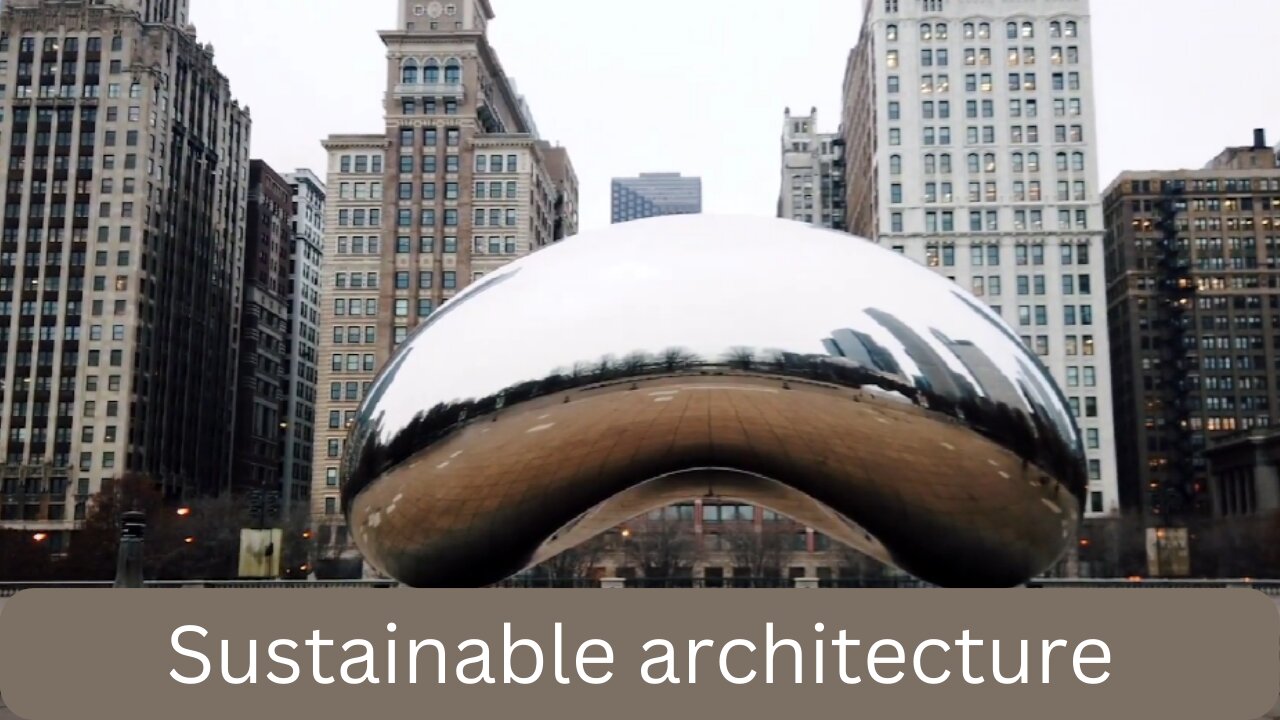Premium Only Content

What is sustainable architecture?
Sustainable architecture aims to minimize the negative environmental impact of buildings by improving efficiency and using eco-friendly materials. Here are some key points about sustainable architecture:
1. Efficiency: Sustainable architecture focuses on energy efficiency, reducing waste, and optimizing resource use. It aims to create buildings that consume less energy during their lifecycle.
2. Materials: Sustainable buildings use renewable and recycled materials. These materials have a lower environmental footprint and contribute to a healthier ecosystem.
3. Design: Architects incorporate passive design strategies** to maximize natural light, ventilation, and insulation. This reduces the need for artificial lighting, heating, and cooling.
4. Water Conservation: Sustainable architecture emphasizes water-saving features, such as rainwater harvesting, efficient plumbing fixtures, and drought-resistant landscaping.
5. Green Building Certifications: Various certifications, like LEED (Leadership in Energy and Environmental Design), validate a building's sustainability. LEED-certified buildings meet strict criteria for energy efficiency, indoor air quality, and materials.
6. Examples: Notable examples of sustainable architecture include energy-plus houses, which generate more energy than they consume, and passive solar buildings that utilize solar energy for heating and cooling.
The future of sustainable architecture lies in continued innovation, research, and collaboration to create environmentally responsible structures that harmonize with our planet.
-
 2:48
2:48
Steven Crowder
1 hour agoCROWDER CLASSICS: What’s This? | Nightmare Before Kwanzaa (Nightmare Before Christmas Parody)
7.16K4 -
 LIVE
LIVE
Wendy Bell Radio
6 hours agoThe Bridge Too Far
11,791 watching -
 1:03:45
1:03:45
Donald Trump Jr.
21 hours agoHappy Festivus: Airing Our Grievances and Stopping The Swamp w/Sean Davis | TRIGGERED Ep.201
326K370 -
 1:30:30
1:30:30
Game On!
9 hours ago $0.01 earnedTop 5 things you need to know for Sports Christmas!
2.82K1 -
 1:58:10
1:58:10
Robert Gouveia
19 hours agoMatt Gaetz REJECTS Report, Sues Committee; Luigi Fan Club Arrives; Biden Commutes; Festivus Waste
229K180 -
 1:31:40
1:31:40
Adam Does Movies
19 hours agoThe Best & Worst Christmas Movies! - LIVE!
4.76K3 -
 58:10
58:10
Kimberly Guilfoyle
21 hours agoAmerica is Back & The Future is Bright: A Year in Review | Ep. 183
128K65 -
 3:03:27
3:03:27
vivafrei
1 day agoEp. 242: Barnes is BACK AGAIN! Trump, Fani, J6, RFK, Chip Roy, USS Liberty AND MORE! Viva & Barnes
215K218 -
 LIVE
LIVE
2 MIKES LIVE
2 hours agoTHE MIKE SCHWARTZ SHOW with DR. MICHAEL J SCHWARTZ 12-24-2024
154 watching -
 1:14:17
1:14:17
MTNTOUGH Fitness Lab
22 hours agoNavy SEAL Dom Raso: The Cold, Hard Truth About Modern Brotherhood | MTNPOD #96
1.62K1